PART 3 OF A SERIES
Pharmaceuticals
In part 1 we talked about how certain minerals, vitamins and dietary changes can calm a horse.
In part 2 we discussed amino acids and the role they play in calming
In part 3 we reviewed many herbal ingredients that have been shown to have a calming effect.
Now for the final issue in this series we focus on drugs and products for calming.
Let’s start with pharmaceuticals that have been used for calming.
Acepromazine
Probably the most famous is Acepromazine or “Ace”. Acepromazine is a phenothiazine derivative antipsychotic drug. It was first used in humans in the 1950’s. Acepromazine is frequently used in horses as a sedative. It has been widely used in horses as a pre-anesthetic sedative. However, it should be used with caution in stallions due to the risk of paraphimosis (penile paralysis). Its potential for cardiac effects, namely hypotension (low blood pressure) due to peripheral vasodilation, can be profound and as such is not recommended for use in geriatric, debilitated patients or in horses with large volume blood loss.
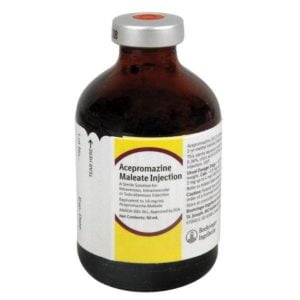
Acepromazine acts as a blacking agent on different postsynaptic receptors in the nervous system. Acepromazine is available as an injectable solution and as a tablet. Acepromazine can be administered by the intramuscular route, taking effect within 20-30 minutes, or may be given intravenously, taking effect within minutes. Acepromazine will cross mucous membranes and can be given orally. The length of sedation is variable depending on the dose, route and patient but sedation usually lasts for 1–4 hours.
Additionally, acepromazine is used as a vasodilator in the treatment of laminitis (founder). It is also sometimes used to treat horses experiencing Equine Exertional Rhabdomyolysis (Tying up Syndrome).
Acepromazine lowers blood pressure, and should therefore be used with caution in horses that are experiencing anemia, dehydration, shock, or colic.
Xylazine
Another class of pharmaceuticals with sedative properties include with Alpha 2 Agonists. These drugs all act by the same method but have varying degrees of sedation, pain blocking, duration of action and side effects.
Xylazine was originally released under the trade name “Rompun”. Xylazine can be given intravenously or intramuscularly. Xylazine causes profound sedation, and varying degrees of muscle relaxation and pain relief. It has a short duration of action that makes it ideal for use in examination and treatment of colic in horses. Xylazine slows the cardiac rate and reduces cardiac output. All of the agents in the alpha 2 agonist classed must be used with caution in horses with cardiac conditions.
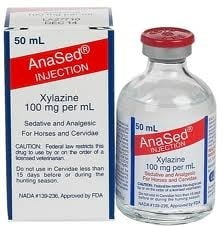
Dormosedan
Detomidine is an imidazole derivative and alpha 2 agonist sold under the trade name “Dormosedan”. This drug is a powerful tranquilizer with potent pain relieving qualities. Detomidine can be given intravenously and intramuscularly. It is also available in an oral gel formulation sold as “Dormosedan Gel”. Dormosedan acts quickly and can last up to 4 hours depending upon the route and dosage used. Dormosedan should be used with caution when working around the hind limbs of the horses as explosive reactions have been reported to light stimuli.
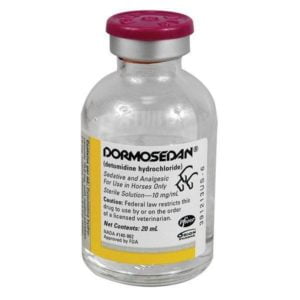
Sedivet
Romifidine is the newest alpha 2 agonist sold as “Sedivet”. Like Xylazine and Detomidine Sedivet can be given intravenously, or intramuscularly. Sedivet tends to cause less head drop and ataxia (incoordination) than other alpha 2 agonists which can be an advantage during some veterinary procedures.
In a comparison study of Detomidine and Romifidine “The administration of both drugs at all doses resulted in sedation. The sedation achieved with Romifidine was significantly shallower and shorter-lived than with Detomidine at the recommended doses.” In addition “At all doses Detomidine had analgesic properties against the effects of electrical pain stimulation at the withers, the coronary bands on the front and hind legs, and in the perianal region, which were dose-dependent in depth and duration, whereas Romifidine was devoid of any analgesic effect. Instability and ataxia were more pronounced with Detomidine than with Romifidine but the effects were only slight to moderate and not regarded as a hindrance to procedures for which sedation is needed. Bradycardia was evident with both drugs at all doses; its severity and duration was related to the sedative properties of the drugs and was dose related. No other side effects were observed.”
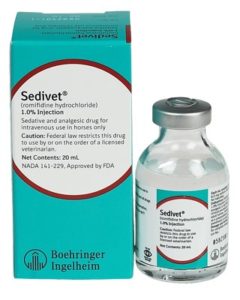
Reserpine
Reserpine (also known by trade names Raudixin, Serpalan, Serpasil) is an indole alkaloid, antipsychotic and antihypertensive drug that has been used for the control of high blood pressure and for the relief of psychotic symptoms, although because of the development of better drugs for these purposes and because of its numerous side-effects, it is rarely used today. The antihypertensive actions of reserpine are a result of its ability to deplete catecholamines from peripheral sympathetic nerve endings. These substances are normally involved in controlling heart rate, force of cardiac contraction and peripheral vascular resistance.
Reserpine irreversibly blocks the vesicular monoamine transporter (VMAT). This normally transports free intracellular norepinephrine, serotonin, and dopamine in the presynaptic nerve terminal.
It may take the body days to weeks to replenish the depleted VMAT, so reserpine’s effects are long-lasting.
This depletion of dopamine can lead to drug-induced Parkinsonism.
Reserpine was commonly sold as Serpasil, a long acting tranquilizer that had effects lasting up to 30 days. Serpasil was used is the horse industry to help horses in lay-up for injuries but also came into unscrupulous use as a long-acting tranquilizer in horses being sold.The unsuspecting buyer leaves the sale with a calm horse that weeks later has become a completely different animal.
Today Reserpine is used primarily in tablet form for horses needing sedation for rehabilitation from injury.
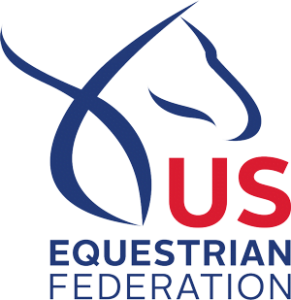
The problem will all of the above pharmaceuticals in that they are prohibited for use in competition under many jurisdictions. Many elite horse competitions fall under the Drugs and Medications Rule of the United States Equestrian Federation, American Quarter Horse Association, FEI, National Trail riding Council, and other where any substance that causes sedation is a prohibited substance.
You can review the USEF Drugs and Medications Rule by clicking here.
Milk Hydrolysates
Most recently a class of compounds was developed called Milk Hydrolysates. Researchers had observed that young animals and humans became sleepy after nursing. Very young animals contain pepsin as a digestive enzyme in their stomachs. As we age pepsin is replaced by Trypsin and adult animals and humans. Mild contains the protein Casein, when casein interacts with pepsin a peptide of amino acids is produced called Casozepine. Casozepine was found to act like a benzodiazepine. Benzodiazepines are a class of tranquilizers that include diazepam (Valium).
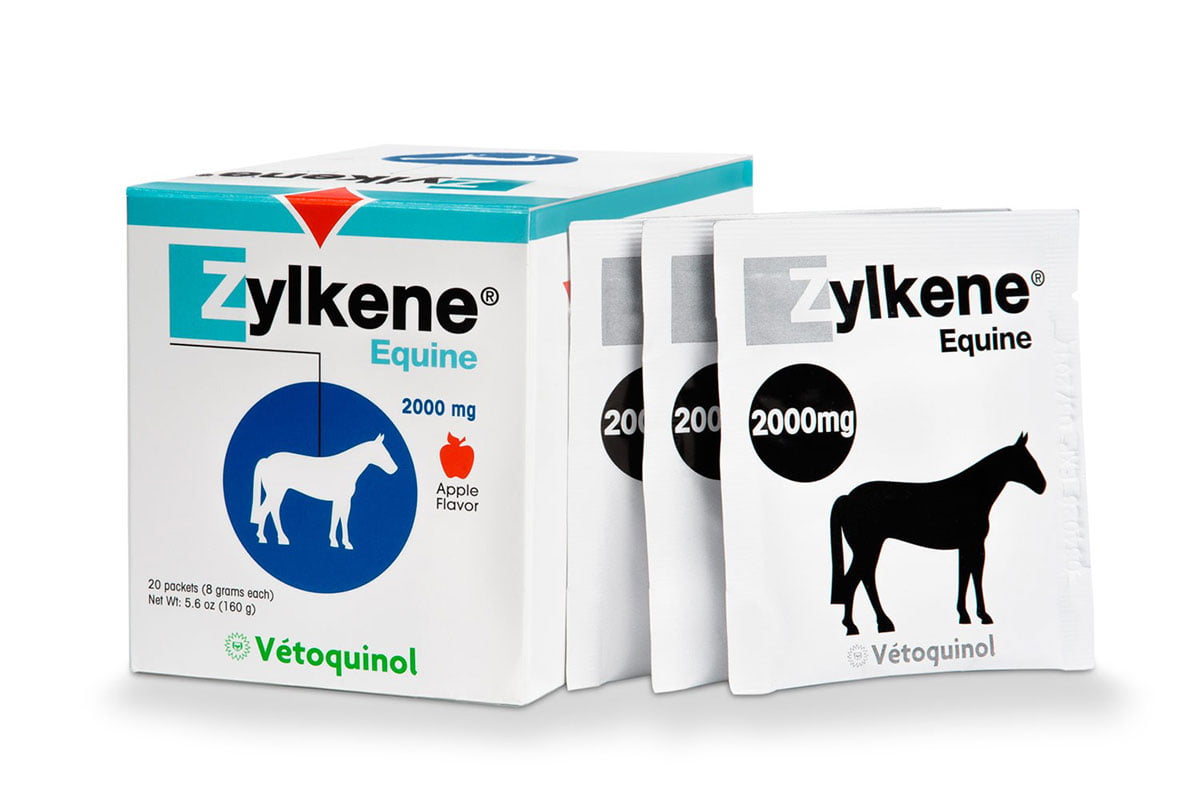
Benzodiazepine tranquilizers act by blocking the GABA neurotransmitters. Benzodiazepines were among the first generation of tranquilizers with anxiolytic effects at dose levels that did not impair physical coordination and mental alertness. However benzodiazepines are known for certain adverse effects on memory as well as a reduced threshold for aggression.
The advantage of Casozepine is that it appears to act only on selected GABA neurotransmitters that ae specific for anxiety without adverse effects on memory or disinhibition of aggression.
STUDY AT DONE AT THE PRESTIGIOUS EQUINE BEHAVIOR LAB AT THE SCHOOL OF VETERINARY MEDICINE, UNIVERSITY OF PENNSYLVANIA.
Calming Benefit of Short-term Alpha-Casozepine Supplementation during Acclimation to Domestic Environment and Basic Ground Training of Adult Semi-Feral Ponies
by Sue M. McDonnell PhD, Jaime Miller AS CAHT, Wendy Vaala VMD, dip ACVIM
To evaluate potential calming effects of alpha-casozepine on horses, we blindly compared behavior and training efficiency of adult semi-feral ponies treated with either alpha-casozepine or control supplement during transition to domestic management and handling. Six ponies (three matched pairs) aged 2 to 8 years that had been reared and kept since birth under semi-feral social and environmental conditions were given either alpha-casozepine (1000 mg orally once daily for ponies weighing 160 to 205 kg) or control supplement, beginning 5 days before being moved to a domestic facility for a 2-week introduction to stabling, haltering, leading, tethering, social separation, stall confinement, grooming, simulated girthing, lifting feet, health care treatments, and transportation. Objective quantitative behavior measures (latencies to complete tasks, avoidance responses, and nervous defecations) were derived from video-recorded handling sessions. For each of the 14 sessions, ponies were ranked 1 (best) to 6 (poorest) for calm, compliance, and acclimation/skill progress. All human-animal interactions,video analyses, and rankings were done blindly to supplement assignments. For most daily sessions across the 2-week training period, each of the three alpha-casozepine-treated ponies performed better than their matched control counterparts, and they also had the top three sums of daily session ranks, with a mean of 35.2 compared with 62.8 for control ponies. At 6 weeks after the 2-week training period, the alpha-casozepine-treated ponies retained the best three sum of ranks for the seven specific skills re-assessed at that time. These results provide evidence of the benefit of alpha-casozepine supplementation to horses undergoing potentially stressful situations inherent to domestic management.
In other words, horses on Casozepine while in training learned their lessons quicker and required fewer training sessions. In addition when placed back in training horses previously trained under the influence of Casozepine had better recall of their previous lessons.
In 2014 CGES participated in a trial using Casozepine prior to its release in the US market. We asked multiple horse owners to try the product in as many situations as possible. This included hunter-jumpers, barrel racing horses, trail horses, ropers and gaited show horses. Horses under the influence of Casozepine are alert with no incoordination. They show a marked reduction in anxiety and reactivity to stimuli.
Today Casozepine is available in the United States under the trade name of Zylkene. Zylkene (Casozepine) is a natural product derived from milk. It is composed of a chain of amino acids and is not habit forming. It acts quickly and lasts for several hours. Zylkene is given by placing it on feed. No injections are given. Casozepine does NOT violate USEF, AQHA or other jurisdictions that prohibit the use of sedatives.
In summary there are many calming products on the market. You can go to any website and have dozens of products come up on your search. Many products are combinations of several ingredients that we have covered in this series. You now have the tools to research these products and decide which product works best for you and your horse.
As always if you have questions please feel free to give us a call, we are always happy to help. Thanks for reading!
